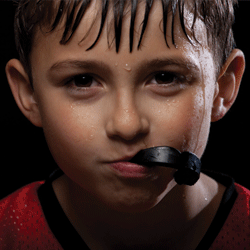A good balance between training stress and recovery is essential for sports performance. In order to adapt effectively, sessions must deliver a strong stimulus without killing you! Research on recovery, readiness and fatigue is all too common. However, try having a quick search for monitoring fatigue in youth athletes. The literature is surprisingly light. So, what measures, if any are appropriate for monitoring youth athletes?
Two Typical Methods of Monitoring
Counter Movement Jump
Used to assess fatigue – regular measurement of CMJ height and or flight time can detect small changes that may signify fatigue. However, athletes will sometimes change their movement pattern, leading to seemingly normal jump, despite being fatigued.
Wellness Questionnaire
Despite seeming too simple for the depths of sport science, a wellness questionnaire is a good measure of fatigue and readiness. Questions normally relate to sleep, fatigue, soreness, mood and stress.
Does the Same Apply for Youth Athletes?
Research published in 2018 looked into different methods of monitoring in youth athletes. Fifty two 16-18 year olds participated in a 7 week long study.
The Results
Wellness questionnaires and perceived status of recovery came out on top. Not only did they provide successful measures of fatigue and readiness to train, they’re easy to implement. The results can be quickly and easily recorded and analysed without getting lost in too much data. Performance tests such a CMJ were found to be far less sensitive when detecting fatigue.
Practical Takeaways
As a coach, a parent or an athlete yourself, you want to make your life as simple as possible. Try using simple 0-10 scales of readiness and fatigue. If you fancy a bit more data, try a full wellness questionnaire. As an Expert Personal Trainer in Berkshire I use a variety of methods with clients. If you train more regularly, I will likely monitor you more closely. However, if you only train twice a week, I may only track a couple of things.
The trick is to find out what works for you! You may find that the longer you train, the more you know your body. If you’re training a youth athlete, again, find what works for you. Keep it simple and focus on the big picture.
